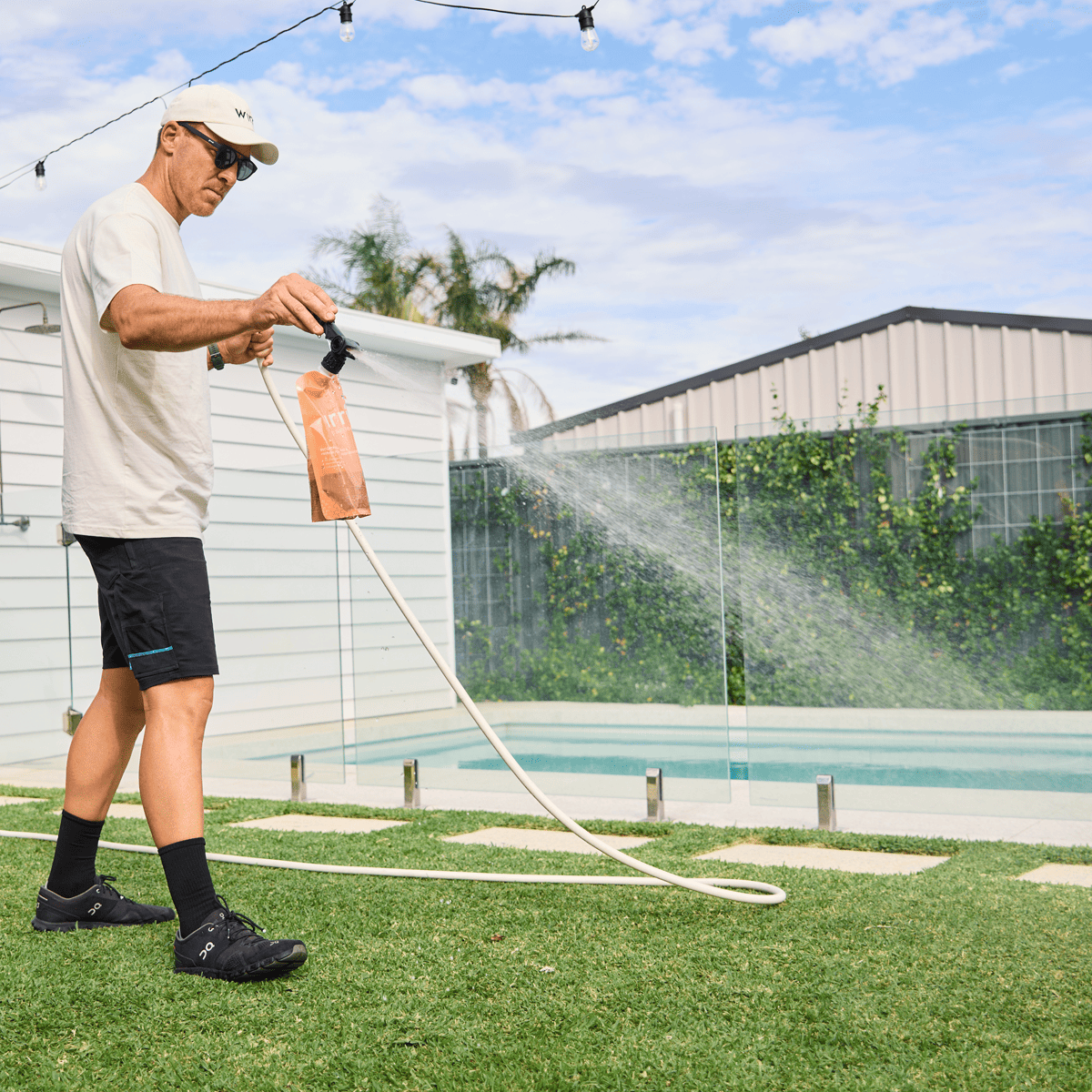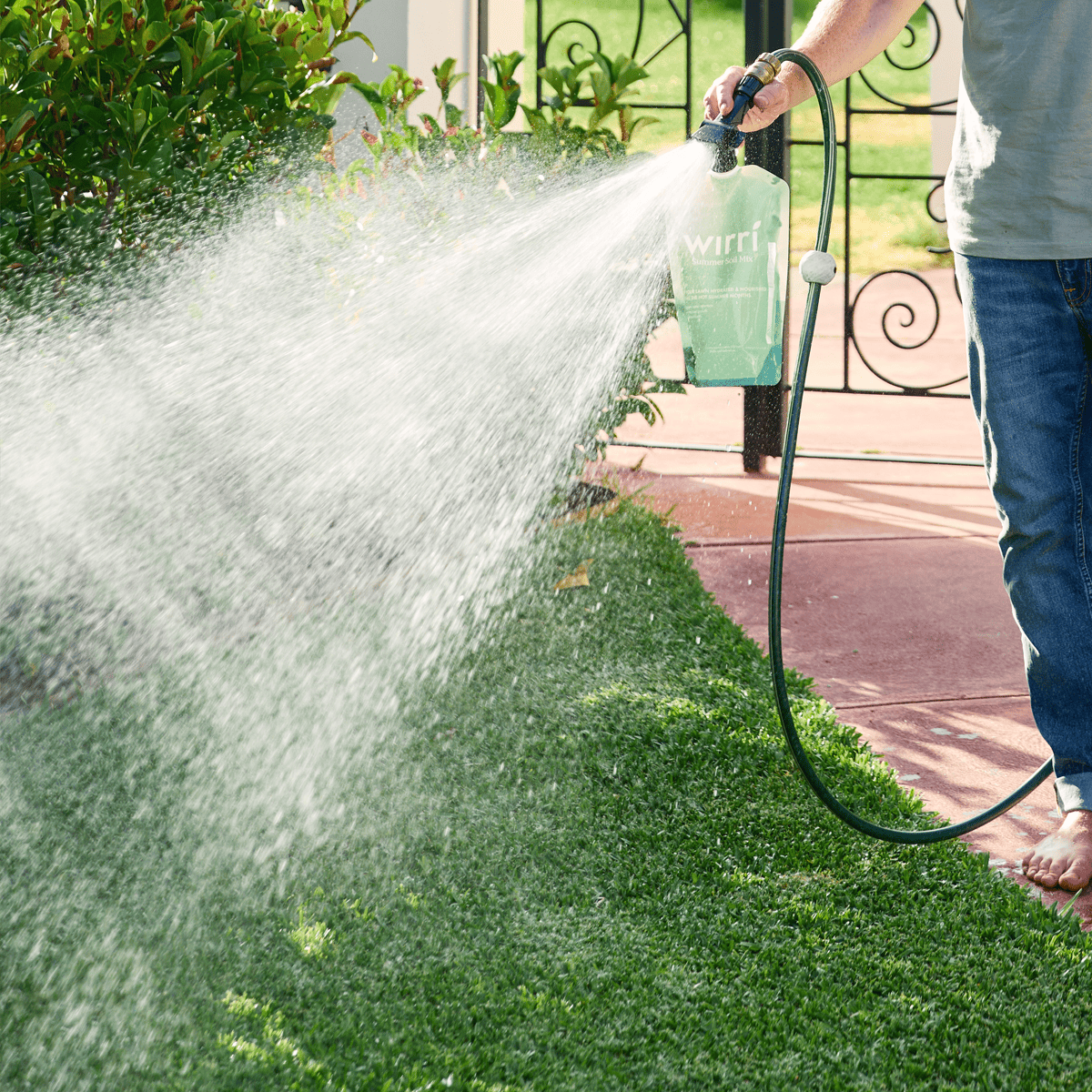Subscribe and save 17% with an annual subscription. Learn more.
Subscribe and save 17% with an annual subscription. Learn more.
Watering your lawn might seem like a straightforward task, but in Australia, where water is a precious resource and the climate can be harsh, it’s important to water wisely. Whether you live in the tropical north, the arid interior, or the temperate south, understanding how and when to water your lawn is key to keeping it healthy and green without wasting water.
At Wirri, we’re all about helping you make your lawn thrive in an eco-conscious way. Here are the best practices for watering your lawn in Australia, tailored to different climates and conditions.
Australia’s diverse climates mean that lawn watering practices will differ depending on where you live. Here’s a quick guide to watering based on the primary climate zones in Australia:
Understanding your local climate is the first step to creating an effective and sustainable watering schedule for your lawn.
One of the simplest but most effective watering tips is to water your lawn early in the morning. Ideally, aim to water between 5 am and 9 am. Here’s why:
By watering early, you not only reduce water wastage but also encourage healthier growth for your lawn.

It’s a common misconception that lawns need to be watered every day. In fact, daily watering can lead to shallow roots, making your lawn more susceptible to drought and stress. Instead, aim for deep, infrequent watering to encourage your lawn to develop a deep root system.
By watering deeply and less often, your lawn will be better equipped to handle dry periods, as the deep roots can access moisture stored deeper in the soil.
The type of irrigation system you use can make a big difference in how efficiently your lawn absorbs water. Here are some systems that are both water-efficient and effective:
Investing in a water-efficient irrigation system can save you time and ensure that every drop of water is used effectively.
In many parts of Australia, rainwater collection is a practical and eco-friendly way to water your lawn. Installing a rainwater tank allows you to store water during wet periods and use it when your lawn needs it most.
Rainwater collection is not only cost-effective but also an environmentally friendly way to manage your lawn’s water needs.
Different seasons call for different watering strategies. Overwatering is a common problem that can lead to wasted water and unhealthy grass. Here’s how to adjust your watering routine throughout the year:
By adjusting your watering routine based on the season, you’ll avoid overwatering and help conserve water.
Healthy soil is key to retaining moisture and reducing the need for frequent watering. If your lawn’s soil is compacted or lacking in organic matter, it will struggle to hold onto water. Here’s how to improve your soil’s water-holding capacity:
By improving your lawn’s soil health, you’ll maximise the effectiveness of the water you do use, helping your lawn stay green with less effort.

In many parts of Australia, water restrictions are in place, particularly during dry periods. Staying informed about local water restrictions is essential to avoid fines and ensure you’re using water responsibly.
By being mindful of water restrictions, you can do your part to conserve water while still keeping your lawn in great condition.
Watering your lawn efficiently doesn’t just keep it green—it’s also a crucial part of maintaining a sustainable, eco-friendly outdoor space. By adopting smarter watering practices, choosing the right irrigation system, and improving your soil’s ability to retain moisture, you can have a healthy lawn while conserving water.
At Wirri, we’re passionate about helping you care for your lawn in a way that’s good for both your home and the environment. Our subscription service provides the tools, products, and guidance you need to keep your lawn looking its best year-round, even during dry periods.
Ready to make your lawn care routine more water-efficient? Join the Wirri community today and start growing a greener, healthier lawn the eco-friendly way!
Check out the Wirri blog for more seasonal lawn care tips and eco-conscious advice. Stay tuned for updates!
Stay in the loop with special offers, lawn care tips, and more.


Wirri supports Trillion Trees Australia, the UN Sustainable Development Guide and Pledge 1% among other progressive initiatives.
Wirri acknowledges the Australian Aboriginal and Torres Strait Islander Peoples as the first inhabitants of this nation and the traditional custodians of the lands on which we live, work, and care for our environment. We recognize their continuing connection to land, water, and sky and pay our respects to Elders past, present, and emerging.